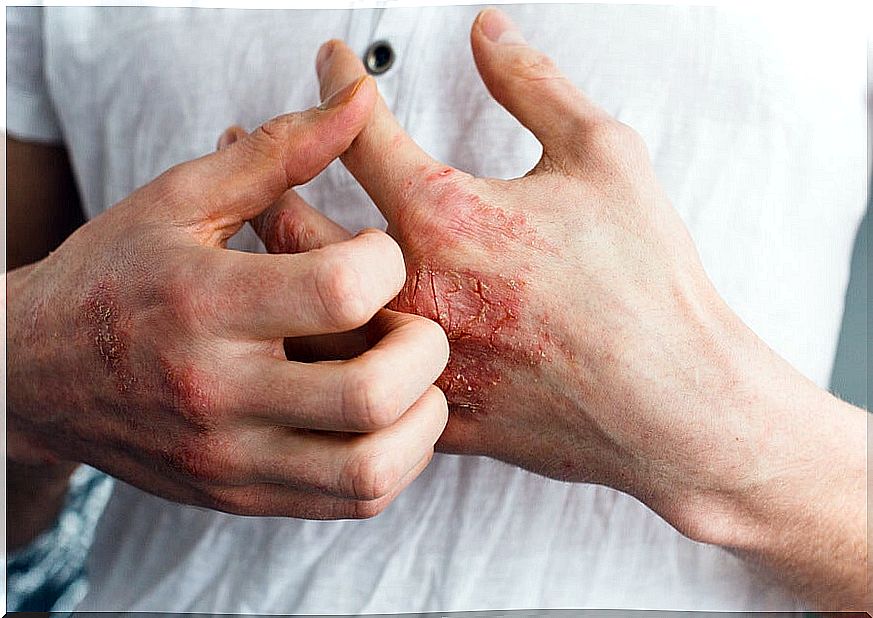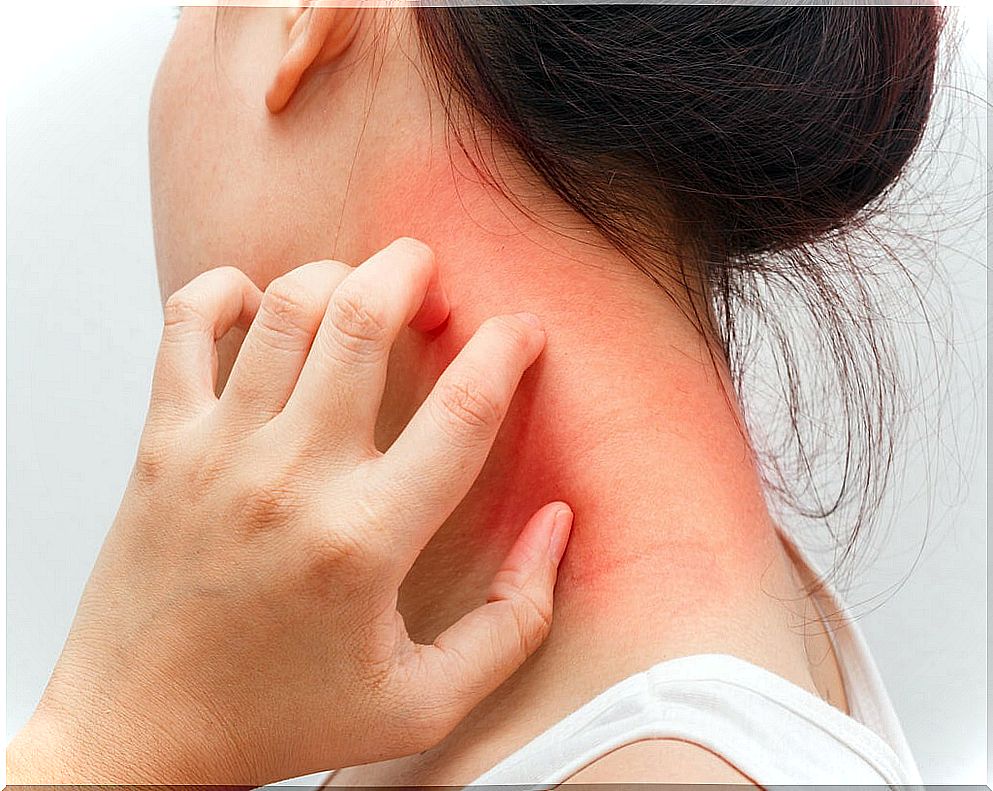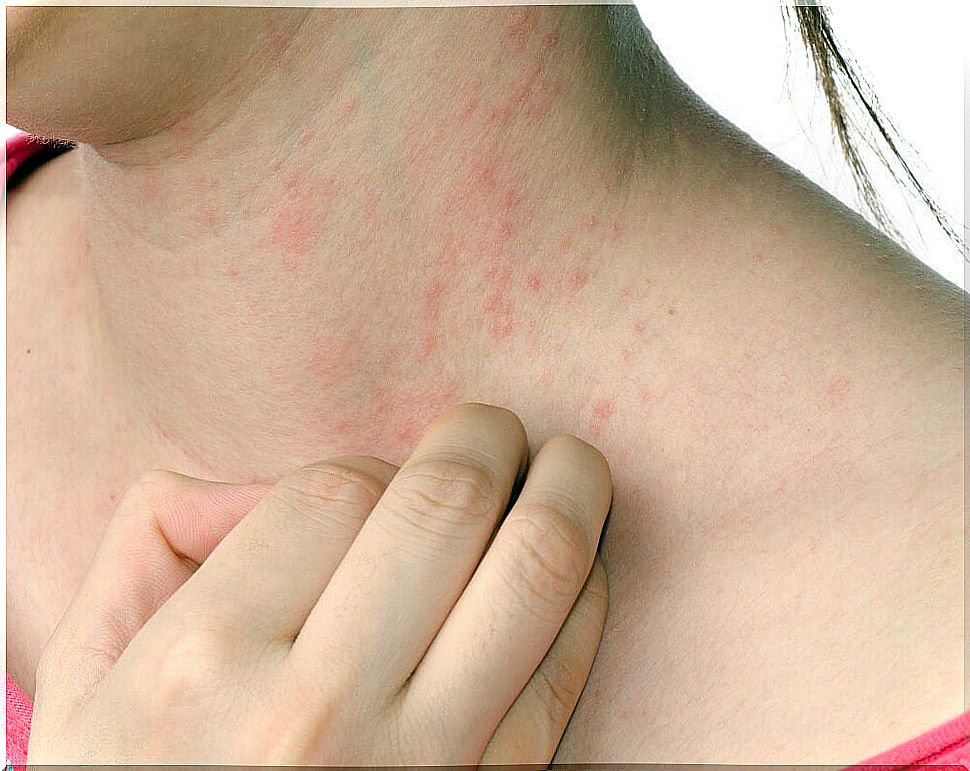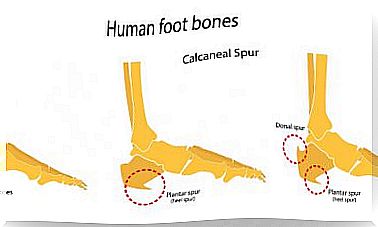What Is Atopic Dermatitis?
Atopic dermatitis is a skin disorder that has increased in recent years. Do you want to know more about it?

Atopic dermatitis is a skin disorder that causes redness and itching. It is more common in children, but it can occur at any age. Likewise, it is usually long-lasting or chronic; since it remits for some periods and ends up exacerbating.
Your diagnosis is in the hands of a professional. However, we explain the main aspects of interest to detect it in time.
Description of atopic dermatitis
Atopic dermatitis, also known as eczema, is a disorder that manifests itself through redness on the skin and itching in the skin area. In some cases, small watery bumps also appear.
Today, this disease affects almost 20% of children. It is a little more common in the developed countries of the northern hemisphere, but it takes place all over the planet. Along these lines, between 3 and 5% of infants with atopic dermatitis will continue to suffer from it until adulthood.

Atopic skin is characterized by its dryness. This leads to flaking and irritation, causing bothersome symptoms like itching. According to the Spanish Association of Pediatrics, it is classified into three groups:
- Of the infant. It manifests itself at five months of life and usually appears on the face (with the exception of the mouth, nose and the area around the eyes). Sometimes it also appears on the scalp, ears and the back of the hands.
- Child. It is a type of atopic dermatitis that begins around 2 years and lasts until 7, or until puberty. It occurs mostly on the elbows and knees, although it can appear anywhere on the body.
- Of the adult. This dermatitis occurs after puberty, and it shows plaques on the skin with excoriations. It affects the back of the hands, the flexion zone of the wrists, legs and feet.
Causes
Science has not exactly established the causes of this disease. What is known is that there are several factors that are capable of influencing its development or worsening. Several researchers at Orange Park Medical Center point out that these reasons are:
- Genetics. So far, the main cause of atopic dermatitis is believed to be genetic predisposition. Children of parents who have suffered from hay fever or some type of allergy develop the disease more frequently.
- Mother’s age. Some professionals hypothesize that the older the mother at the time of delivery, the greater the probability that the child will suffer from atopic dermatitis.
- Environment. The disease appears most frequently in polluted, cold-climate cities. Also in places where people smoke or are very dusty. Also, the British Association of Dermatologists advises not to paint the walls when you are pregnant; since it could also trigger this problem in the baby.
Sweat also seems to play a role, as does the use of wool or nylon garments. In addition, it also appears in those who have food or other allergies.
Symptoms and diagnosis
The main symptom of atopic dermatitis is skin lesions. These have a crusty and red appearance. They are also accompanied by intense and prolonged itching (itching that causes the need to scratch).
- In infants, the lesions are vesicular and exudative. Its appearance in the case of children is dry, leathery and thick.
- On the other hand, in adults the lesions are also leathery and hyper or hypopigmented, that is, with little or too much color.
Long-term sufferers of this disease are often more likely to develop herpetic eczema if they contract herpes simplex.
In addition, some specialists indicate that there is a greater risk of developing cataracts between 20-30 years of age. This is due to the constant use of corticosteroids to treat the disease. However, a study published in 2011 by the Journal of the American Academy of Dermatology was able to deny this claim with the results obtained.

The diagnosis of the disease is made from simple observation, with the examination of the skin and the analysis of the medical history . Sometimes some patch tests are done, but lab tests are not usually required.
What to do to combat atopic dermatitis?
Its incidence among the population is increasing more and more. This is generally due to the effects of environmental pollution and inappropriate lifestyle habits.
So far no cure has been found for this disease, but research is ongoing.
Are you experiencing symptoms of atopic dermatitis? If so, then visit your trusted dermatologist as soon as possible. The professional will be in charge of giving the appropriate diagnosis and treatment.









